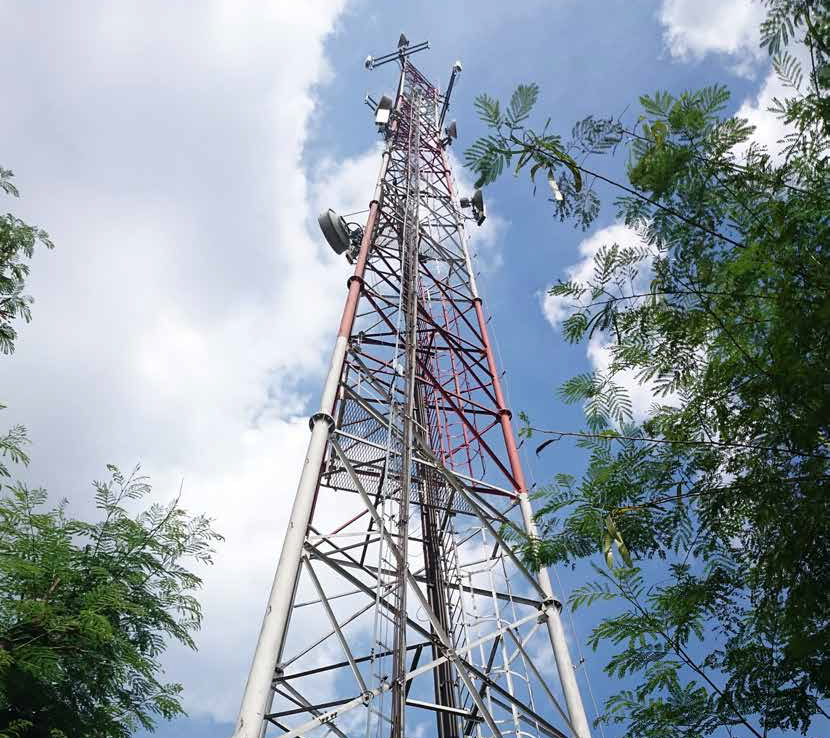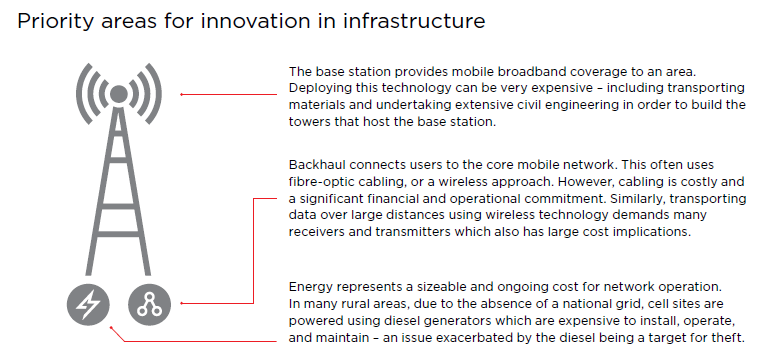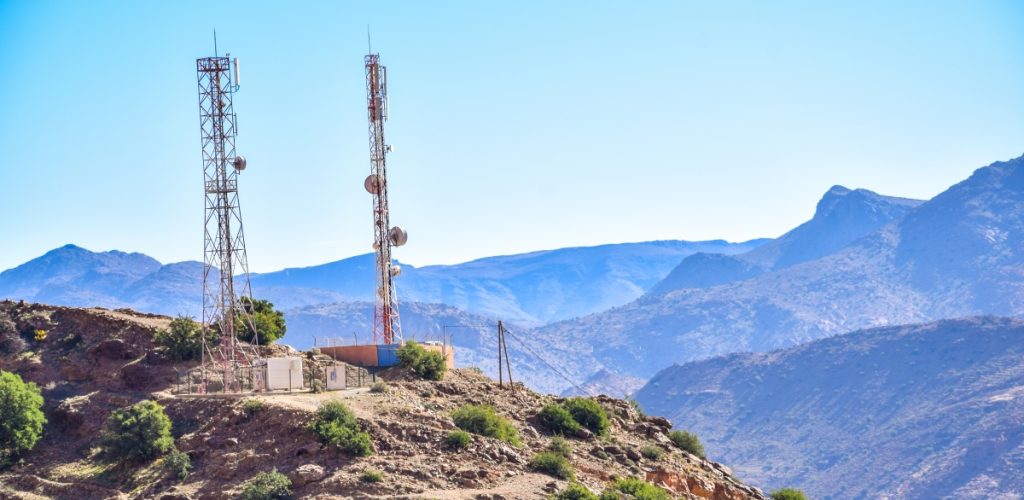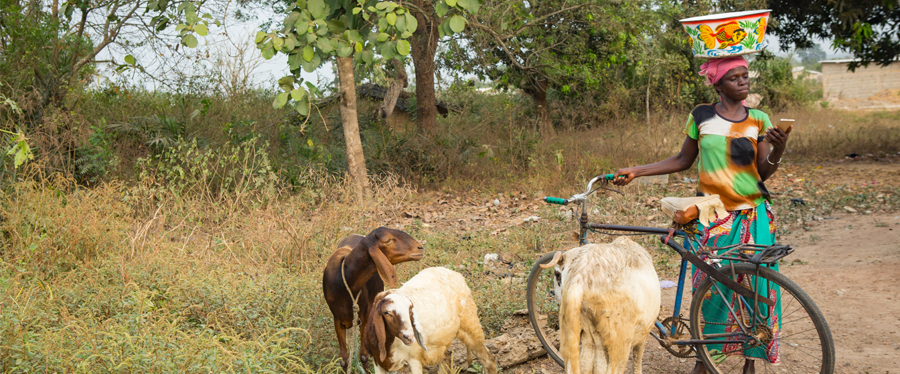Globally, 750 million people do not live within the footprint of mobile broadband. Without this coverage and connectivity, they’re unable to benefit from the potential that being online can afford. Although the mobile industry, and partners, have made huge progress in getting people online, more is needed to close the digital divide and to connect the unconnected.
Areas and populations not covered by mobile broadband networks are often rural and remote, and likely to be poorer. Connecting them is increasingly less of a technical challenge and more of an economic one. In these settings, building and maintaining network infrastructure can be double the cost of urban deployments – whilst revenues from these sites can be ten times lower. It’s clear that the industry needs to explore how best to make these investments in mobile broadband infrastructure commercially viable.
Our new report, Closing the Coverage Gap: How Innovation can Drive Rural Connectivity, aims to inform this discussion. Starting by identifying the three main cost drivers associated with the deployment and maintenance of mobile broadband infrastructure – the base station that provides coverage to an area, the backhaul technologies that route this traffic to the core network, and the energy components that ensure all of this can function – the report explores a number of innovations across the three areas. These innovations have the scope to reduce the costs and difficulty of delivering mobile internet coverage to the unconnected:
- Innovations in base station technologies are amongst the more commercially developed. These have a focus on simplified or modular infrastructure – whether lighter towers, wide-area coverage solutions, or technologies that require minimal management and maintenance.
- Innovations in this area include: Nokia Kuha, Ericsson Psi, Altaeros SuperTower, Huawei Ruralstar
- By contrast, innovations in backhaul have considerable potential – but are currently further away from reaching scale. This is particularly the case with regard to the next-generation of satellite technologies, which could prove transformational but are developing in a fast-moving market. Business models, consortia, and use-cases are all still being defined. Microwave technologies are also likely to continue to play a key role in providing backhaul.
- Innovations in this area include: O3b Network’s mPOWER satellite constellation, Loon, DragonWave-X Harmony Radio Lite
- Finally, a reliable and cost-efficient energy supply for rural mobile internet infrastructure is sorely needed. Renewable energy is playing a role in an increasing number of deployments, but further efforts are needed to displace the expensive and dirty diesel generators that remain a mainstay of cell sites. Fuel cell solutions could play a critical role here.
- Innovations in this area include: GenCell, Nokia Fusion Grid, PowiDian SAGES
The report also highlights the importance of taking a holistic approach to innovation. This includes exploring the role of innovation in other aspects of mobile internet deployments (for example in anti-theft measures), but also with regard to ways of working like leveraging smart investment tools, such as the GSMA Coverage Maps, and taking new approaches to business models. With regard to the latter, this is about identifying how to make rural infrastructure investments viable – whether through combining mobile internet rollouts with the provision of other services (particularly energy), taking revenue-sharing approaches, or working with communities to connect the hardest-to-reach.
Regardless of the approach, or innovation, there is a need to continue to invest in learning – particularly in order to understand what does and does not work. Similarly, regulation, policies and wider dynamics must be conducive to innovation. This includes a suitable enabling environment, but also ensuring that stakeholders recognise the value of innovation, and commit to exploring its potential.
Overall, innovation has a key role to play in delivering mobile broadband to rural and remote communities. The mobile industry, and partners, have enabled millions of people to get online – and have the talent, resources, and incentives to deliver further connectivity. However, providing mobile broadband to this last 750 million people will demand a transformational shift in network design, deployment, and customer engagement. Despite the scale of this challenge, the unrivalled benefits that internet access could deliver to this significant population demand that we rise to it.
Click here to read our new report, Closing the Coverage Gap: How Innovation can Drive Rural Connectivity.






